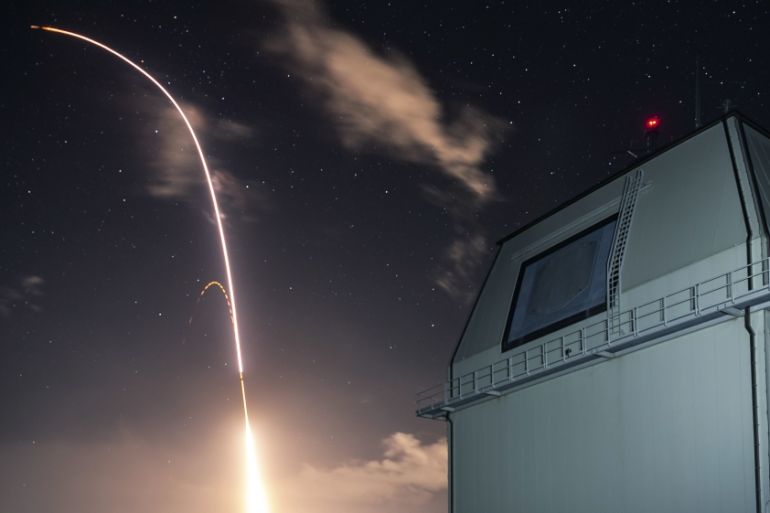Japan government approves record defence budget
The defence funding will cover the cost of introducing the US army’s Aegis Ashore land-based missile interceptor system.

Japan’s government has announced that its defence budget will rise to a record $47bn for the next fiscal year, as Tokyo beefs up its missile defence and deploys stealth jets in a bid to counter China.
The defence spending was part of a $912bn national budget for the fiscal year starting on April 1, 2019, approved by the cabinet of Prime Minister Shinzo Abe.
The government decided to set aside 5.26 trillion yen ($47bn) for defence, the fifth record year in a row, defence ministry officials said on Friday. The budget request requires approval by parliament, where it has a majority.
The defence funding will cover the cost of introducing the US military’s Aegis Ashore land-based missile interceptor system, the officials said.
The 2019 allocation covers six F-35A stealth jets, and part of it will be spent on Japan’s first aircraft carriers since World War II.
The budget is the initial allocation of Japan‘s new five-year defence plan, announced on Tuesday as the latest in a series of steps under Abe to boost the nation’s military.
Under the multi-year programme through March 2024, Japan will upgrade two existing helicopter carriers so that they can launch fighters.
Abe’s government argues the efforts are necessary given growing defence challenges in the region. Along with particularly “strong concerns” about the expansion of China’s military footprint, Japan also remains wary of North Korean promises to abandon nuclear weapons and ballistic missiles, which it has described in a defence white paper as its “most serious and pressing threat”.
But the move is controversial, with critics arguing it shifts Tokyo further away from its commitment to strictly defensive capabilities under Japan’s post-World War II pacifist constitution.
Beijing immediately expressed its “strong dissatisfaction and opposition” to the programme unveiled on Tuesday, urging Tokyo “to adhere to a purely defensive policy”.
Last year, China unveiled its first domestically built aircraft carrier as it continues to assert claims in the South China Sea. Beijing’s first carrier, the Liaoning, is a second-hand Soviet ship built nearly 30 years ago and commissioned in 2012.
Japan’s new programme comes after pledges to buy more US military equipment, under pressure from US President Donald Trump.
The US leader has repeatedly complained about Washington’s huge trade deficit with Tokyo and also urged Abe to expand the country’s defensive capacity.
For his part, Abe has campaigned for years to amend Japan’s pacifist constitution, arguing that it ties the hands of the country’s Self-Defence Forces (SDF) even in protecting the country’s allies from attack.
“Japan’s growing defence budget is directly aimed to counter China’s military threat,” said Akira Kato, professor of international politics and regional security at Tokyo’s J F Oberlin University.
“The budget gain is also part of Japan’s efforts to buy more US military equipment so that it can avoid a trade war with Washington,” Kato told AFP news agency, adding that Tokyo’s defence budget is expected to continue expanding.